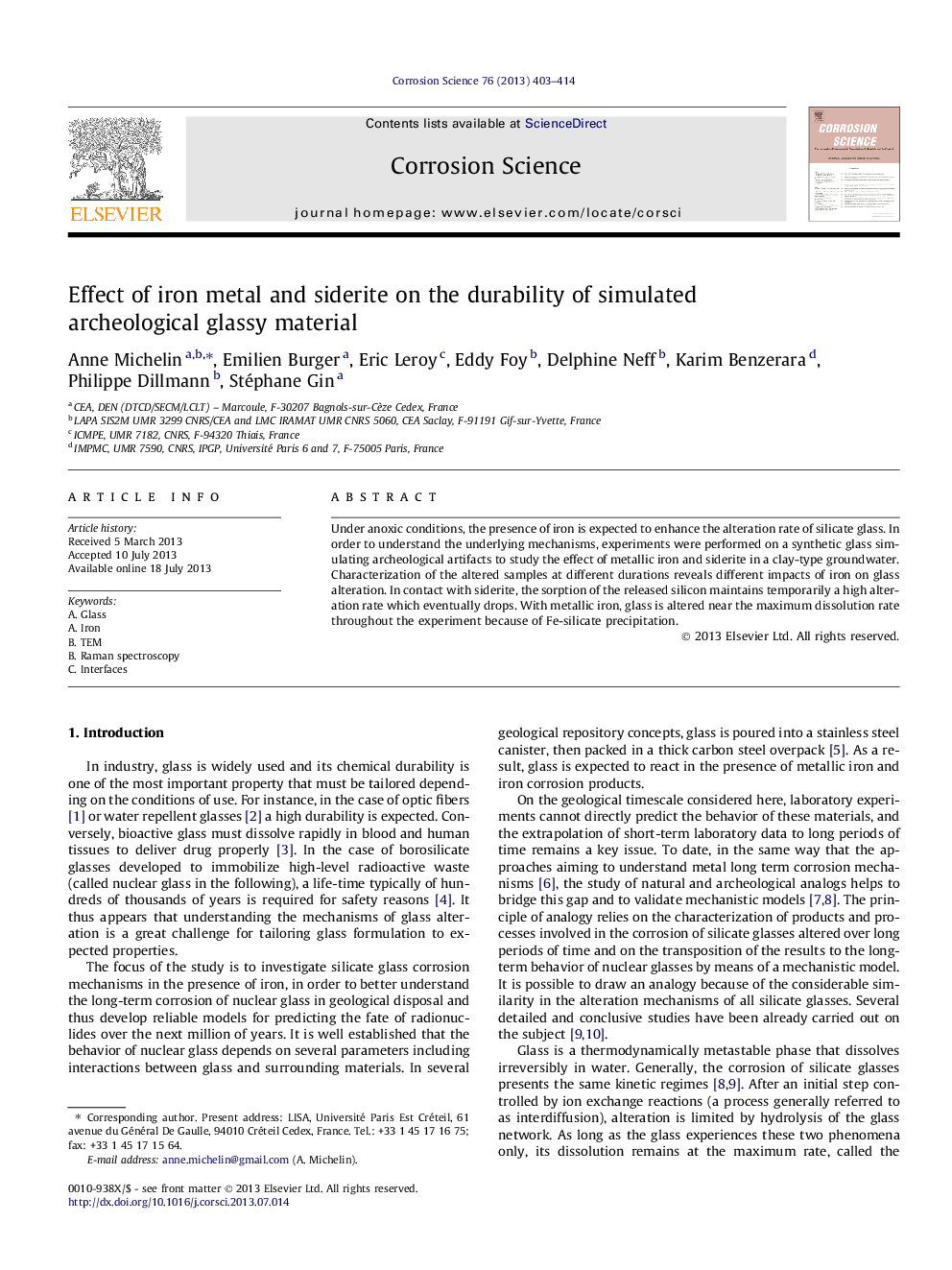| Article ID | Journal | Published Year | Pages | File Type |
|---|---|---|---|---|
| 1469093 | Corrosion Science | 2013 | 12 Pages |
•Laboratory experiments were performed on a glass simulating archeological artifacts.•Experimental conditions reproduced in situ anoxic and clay-type environment.•The effects of siderite and metal iron on glass leaching were investigated.•Siderite led to a moderate and transient effect limited by silica sorption.•With metal iron, glass corrosion is durably sustained by the precipitation of Fe-silicates.
Under anoxic conditions, the presence of iron is expected to enhance the alteration rate of silicate glass. In order to understand the underlying mechanisms, experiments were performed on a synthetic glass simulating archeological artifacts to study the effect of metallic iron and siderite in a clay-type groundwater. Characterization of the altered samples at different durations reveals different impacts of iron on glass alteration. In contact with siderite, the sorption of the released silicon maintains temporarily a high alteration rate which eventually drops. With metallic iron, glass is altered near the maximum dissolution rate throughout the experiment because of Fe-silicate precipitation.
Graphical abstractFigure optionsDownload full-size imageDownload as PowerPoint slide
